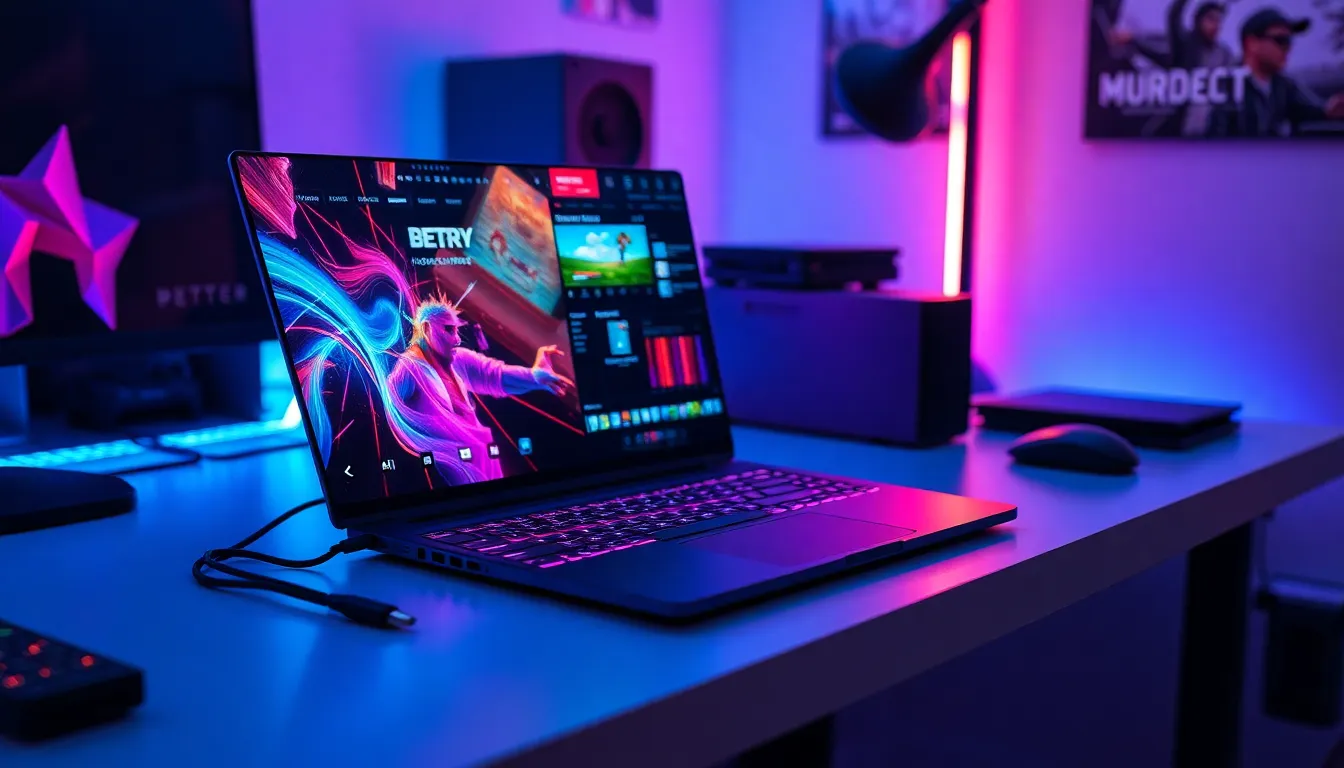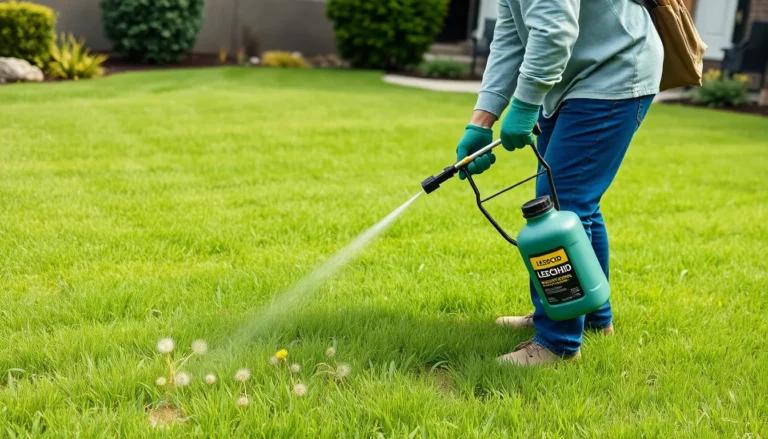Table of Contents
ToggleIn today’s fast-paced digital world, laptop performance is more crucial than ever. Whether for work, gaming, or creative projects, users rely on their devices to deliver speed and efficiency. A sluggish laptop can turn a simple task into a frustrating experience, making it essential to understand the factors that influence performance.
From processing power to memory and storage, several key components determine how well a laptop performs. As technology evolves, so do the expectations of users. Knowing how to optimize and maintain a laptop can significantly enhance its capabilities, ensuring it keeps up with demanding applications and multitasking needs. This article explores the vital aspects of laptop performance, helping users make informed decisions for their computing needs.
Key Factors Affecting Laptop Performance
Understanding the key factors that influence laptop performance helps users select the right device for their needs. Essential components include the processor, RAM, storage type, and graphics card.
Processor
The processor, or CPU, serves as the brain of the laptop. It executes instructions and processes data. Faster processors enable smoother multitasking and faster application loading. Most laptops feature dual-core or quad-core processors. High-performance options, such as Intel’s Core i7 and AMD’s Ryzen 7, deliver superior speed and efficiency, especially for demanding tasks.
RAM
RAM, or Random Access Memory, plays a crucial role in performance. It stores data temporarily for quick access during operations. Laptops typically contain 4GB, 8GB, or 16GB of RAM. For basic tasks, 8GB suffices, while heavy multitasking and gaming often require at least 16GB. More RAM allows for better performance in memory-intensive applications and smoother operation during multitasking.
Storage Type
The type of storage affects load times and data access speed. Laptops utilize either Hard Disk Drives (HDDs) or Solid State Drives (SSDs). SSDs are faster and more reliable, significantly reducing boot and load times. HDDs, although cheaper, offer slower speeds. A laptop with an SSD can perform significantly better, providing quicker access to files and applications.
Graphics Card
The graphics card, or GPU, determines how well a laptop handles visual tasks. Integrated graphics suffice for everyday use, while dedicated graphics cards offer better performance for gaming and graphic-intensive applications. Laptops with dedicated GPUs, such as NVIDIA’s GeForce series, are ideal for gamers and professionals in design fields who require high graphic fidelity and processing power.
Benchmarking Laptop Performance

Benchmarking laptop performance involves evaluating a laptop’s capabilities through a series of standardized tests and real-world applications. These assessments provide valuable data, helping users understand how their devices perform across different scenarios.
Standard Benchmark Tests
Standard benchmark tests offer a reliable means to quantify laptop performance through specific metrics. Common tests include:
- Cinebench: Measures CPU performance using multi-threaded and single-threaded workloads. Higher scores indicate improved processing power.
- 3DMark: Assesses graphics performance, particularly in gaming contexts. Higher scores indicate better graphics rendering and frame rates.
- PCMark: Evaluates overall system performance across various productivity tasks. Scores reflect how well the device handles everyday applications.
- CrystalDiskMark: Tests storage speed, providing read and write speeds for both HDDs and SSDs. Faster speeds result in improved load times.
These tests yield comparative data, enabling users to gauge their laptops against industry standards and competing models.
Real-World Usage Scenarios
Real-world usage scenarios illustrate how laptops perform in everyday tasks. These scenarios include:
- Web Browsing: Evaluates performance during multitasking across multiple browser tabs. Smooth operation with minimal lag is ideal.
- Gaming: Assesses performance under high graphics settings. Successful gaming experiences demand robust GPUs and adequate cooling.
- Content Creation: Focuses on tasks like video editing or rendering. High RAM and powerful CPUs enhance efficiency in these resource-intensive applications.
- Software Development: Measures how well the laptop manages code compilation and running simulations. A fast processor and ample RAM are essential.
By analyzing both benchmark tests and real-world scenarios, users gain a comprehensive insight into laptop performance, guiding them in making informed decisions tailored to their specific needs.
Enhancing Laptop Performance
Enhancing laptop performance involves both hardware upgrades and software optimization. Users can significantly improve their devices’ speed and efficiency through targeted actions.
Upgrading Hardware
Upgrading hardware components directly boosts laptop performance.
- Processor (CPU): Replacing an older CPU with a newer, faster model like Intel’s Core i9 or AMD’s Ryzen 9 can lead to noticeable improvements in multitasking and processing speed.
- Memory (RAM): Increasing RAM enhances data handling capacity. Upgrading to 16GB or 32GB allows for seamless execution of multiple applications simultaneously.
- Storage: Swapping out an HDD for an SSD significantly decreases boot and load times, enhancing overall system responsiveness. SSDs are recommended for better performance and durability.
- Graphics Card (GPU): For users involved in gaming or graphic design, installing a dedicated GPU like NVIDIA’s GeForce RTX series provides superior rendering speeds and better performance in graphic-intensive applications.
Software Optimization
Optimizing software settings can also enhance laptop performance without additional costs.
- Operating System Updates: Keeping the operating system up to date fixes bugs and improves security, resulting in better performance.
- Startup Programs: Disabling unnecessary startup programs reduces boot time and frees up system resources, allowing applications to run more efficiently.
- Disk Cleanup: Regularly performing disk cleanup removes temporary files and frees up storage space, improving system performance.
- Antivirus Scans: Running regular antivirus scans ensures the system is free from malware, which can degrade performance.
- Resource Management: Using task managers or resource monitors helps identify resource-hungry applications that can be closed or uninstalled.
By combining hardware upgrades and software optimizations, laptop users can effectively enhance performance, ensuring their devices remain capable of handling modern applications and multitasking demands.
Common Performance Issues
Common laptop performance issues can hinder user experience and productivity. Identifying these issues helps in maintaining effective laptop operation.
Overheating
Overheating occurs when a laptop’s cooling system fails to dissipate heat efficiently. Dust accumulation in vents or fans restricts airflow. Using laptops on soft surfaces, like beds or couches, can block ventilation. Overheating leads to thermal throttling, where the CPU reduces speed to cool down, resulting in slower performance. Regular cleaning and using hard surfaces for laptops can mitigate overheating risks.
Slow Boot Times
Slow boot times can frustrate users. They typically result from excessive startup programs and fragmented storage. Too many applications configured to launch at startup consume memory resources, delaying boot sequences. HDDs contribute to longer boot times compared to SSDs. Reducing startup programs in system settings and migrating to an SSD can significantly enhance boot speed.
Battery Life
Battery life directly impacts laptop performance. Decreased battery capacity limits usage time and may affect performance under power-saving modes. Background processes and high screen brightness increase power drain. Keeping track of battery health and optimizing settings, such as adjusting brightness and closing unused applications, helps prolong battery life. Regular battery calibration may also enhance longevity.
Laptop performance plays a vital role in achieving productivity and efficiency in today’s fast-paced digital world. Understanding the key components that contribute to performance helps users make informed decisions when selecting or upgrading their devices.
By focusing on aspects like processing power memory and storage type users can tailor their laptops to meet specific needs whether for work gaming or creative projects.
Regular maintenance and optimization techniques can further enhance performance ensuring that laptops remain capable of handling demanding applications. With the right approach users can enjoy a seamless experience that keeps up with their evolving requirements.





